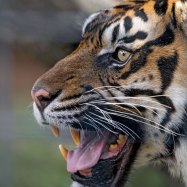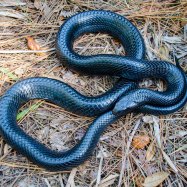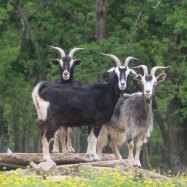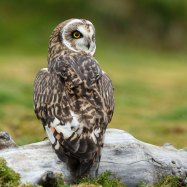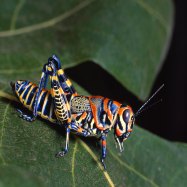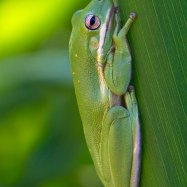
East Siberian Laika
50-65 cm
The East Siberian Laika is a beautiful dog native to Eastern Siberia. With a medium-sized, muscular body and a length of 50-65 cm, they are excellent hunters and loyal companions. As part of the Canidae family, they are related to wolves and have adapted to the harsh, cold climate of their home. Known for their intelligence and endurance, they make great pets for active families. #Eastsiberianlaika #canidae #animals #dogs #Siberia
Animal Details Summary:
Common Name: East Siberian Laika
Kingdom: Animalia
Habitat: Forest and tundra
The Magnificent and Mighty East Siberian Laika: A Canine of the Wild Tundra
The Siberian wilderness is home to some of the most majestic and fascinating creatures on Earth, and among them is the East Siberian Laika. This stunning canine has an ancient and storied history, deeply intertwined with the indigenous peoples of eastern Siberia. With powerful instincts and a strong connection with nature, this dog breed has survived harsh climates and has been a loyal companion to its human masters for centuries. Today, we dive into the world of the East Siberian Laika, exploring its origins, characteristics, and why it is a dog breed like no other East Siberian Laika.An Ancient Heritage
The East Siberian Laika is a breed of dog that is believed to have originated from the Laika dog lineage. This ancient breed has been around for over 2,000 years and has been essential to the survival of the indigenous people of eastern Siberia, such as the Evenki, Yukaghir, and Chukchi. These nomadic peoples relied on the East Siberian Laika for hunting, herding, and even pulling sledges, making it a vital part of their way of life.The Basics: Scientific Name, Classification, and Habitat
The scientific name for the East Siberian Laika is Canis lupus familiaris, and it belongs to the kingdom Animalia, phylum Chordata, and class Mammalia. Along with other breeds like the Siberian Husky and Alaskan Malamute, it falls under the order Carnivora and the family Canidae. This classification highlights its carnivorous nature, with a diet consisting of mostly meat.The East Siberian Laika is well-adapted to its natural habitat, with a range that spans across eastern Siberia, particularly in areas of the tundra and forest. This breed is also commonly found in the coldest regions of Russia, such as Kamchatka and Chukotka. Its thick coat and sturdy build make it well-suited for the harsh climate, which can drop to sub-zero temperatures Ember Tetra.
The Hunter's Diet
As mentioned earlier, the East Siberian Laika is a carnivorous animal, meaning its diet mainly consists of meat. Historically, it would hunt small game like squirrels, hares, and birds, providing its owners with essential sustenance. Even today, these dogs are skilled hunters, making them a valuable asset to hunters and herders, who use them to chase and retrieve game.Interestingly, the East Siberian Laika is also known to feed on fish and berries, making it a versatile hunter. This ability to adapt its diet to the environment is crucial for its survival in the wild, especially during the harsh winter months when prey is scarce.
Physical Characteristics
The East Siberian Laika's appearance varies significantly, as it comes in various colors such as white, grey, black, and even red. The breed's coat is thick and double-layered, providing insulation and protection against the elements. Its outer coat is waterproof and can range from short to medium-length, while the undercoat is dense and soft.In terms of size, the East Siberian Laika is considered a medium-sized dog, with an average length of 50-65 cm. It has a muscular build, with strong legs and a broad chest. With its powerful jaws and sharp teeth, it is no surprise that this breed was historically used for hunting and guarding purposes.
Living in Harmony with Nature
What sets the East Siberian Laika apart from other dog breeds is its unique connection with nature. Unlike other domesticated dogs that have lost their natural instincts, the East Siberian Laika still retains its wild and primitive nature. This makes it an excellent companion for those living off the land or in remote areas.This breed has an incredibly sharp mind, honed by years of living in the wild. It is highly intelligent, agile, and has heightened senses, making it an excellent watchdog. This natural instinct to protect and guard its human family is deeply ingrained in its DNA and is a testament to its loyalty and devotion.
Fading Breeds and Preservation Efforts
Despite its robust and primitive nature, the East Siberian Laika is currently listed as a rare breed with declining numbers. This is due to the increasing popularity of more modern dog breeds, as well as the decline in traditional hunting and herding practices. The Laika dog lineage, which the East Siberian Laika is a part of, is also at risk of becoming extinct.To preserve this magnificent breed, several organizations and kennel clubs are working diligently to promote and protect it. Breed enthusiasts are also taking part in breeding programs to maintain the East Siberian Laika's genetic purity and ensure its survival for future generations.
Final Thoughts
In conclusion, the East Siberian Laika is a truly remarkable canine, rooted in history and culture. Its remarkable physical characteristics, coupled with its sharp intellect, make it a unique and valuable breed. Its fierce loyalty, adaptability, and natural instincts make it a perfect companion for those living in remote areas or with a love for the great outdoors.As we continue to develop and modernize, it is essential to preserve and protect animals like the East Siberian Laika, which serve as a reminder of our ancient connection with nature. Let us appreciate and honor this magnificent canine, for it is truly a treasure of the wild tundra.
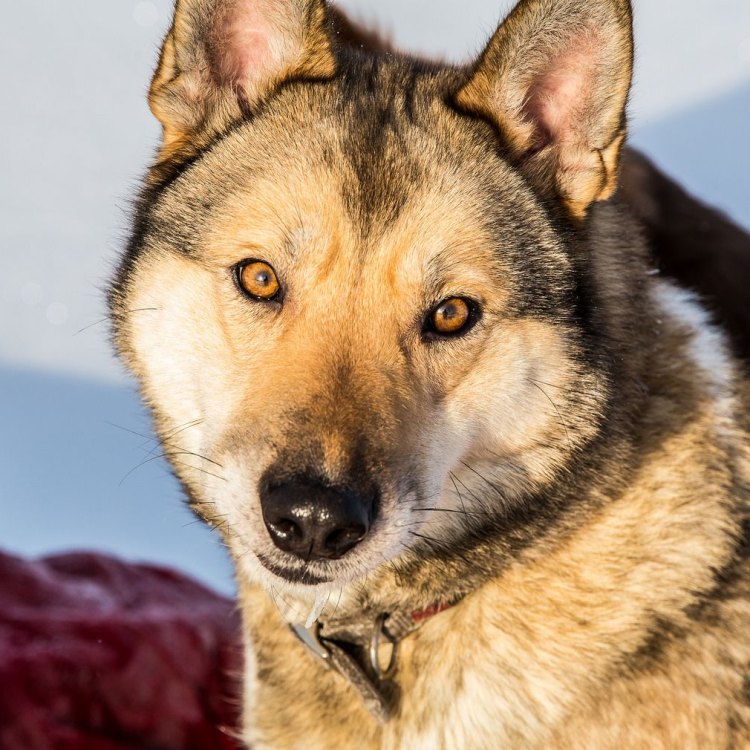
East Siberian Laika
Animal Details East Siberian Laika - Scientific Name: Canis lupus familiaris
- Category: Animals E
- Scientific Name: Canis lupus familiaris
- Common Name: East Siberian Laika
- Kingdom: Animalia
- Phylum: Chordata
- Class: Mammalia
- Order: Carnivora
- Family: Canidae
- Habitat: Forest and tundra
- Feeding Method: Carnivorous
- Geographical Distribution: Eastern Siberia, Russia
- Country of Origin: Russia
- Location: Eastern Siberia
- Animal Coloration: Various colors including white, gray, or black
- Body Shape: Medium-sized, muscular
- Length: 50-65 cm
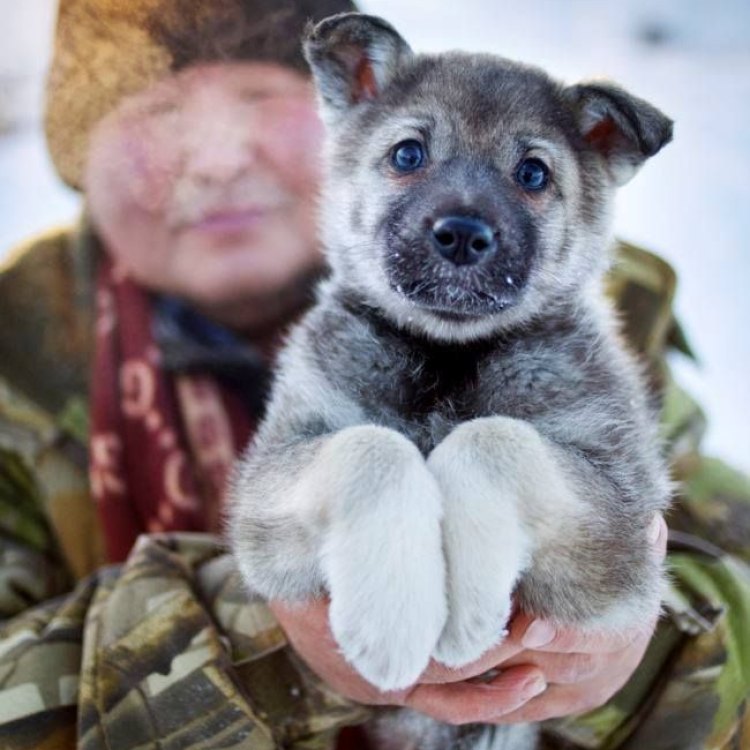
East Siberian Laika
- Adult Size: Medium
- Average Lifespan: 12-15 years
- Reproduction: Sexual
- Reproductive Behavior: Polygamous
- Sound or Call: Bark, howl
- Migration Pattern: Non-migratory
- Social Groups: Pack
- Behavior: Intelligent, energetic, independent
- Threats: Hunting, habitat loss
- Conservation Status: Not evaluated
- Impact on Ecosystem: Helps control small mammal populations
- Human Use: Hunting, sledding, companionship
- Distinctive Features: Thick double coat, erect ears
- Interesting Facts: Used for hunting large game in the harsh conditions of the Siberian wilderness
- Predator: Large predators such as bears and wolves
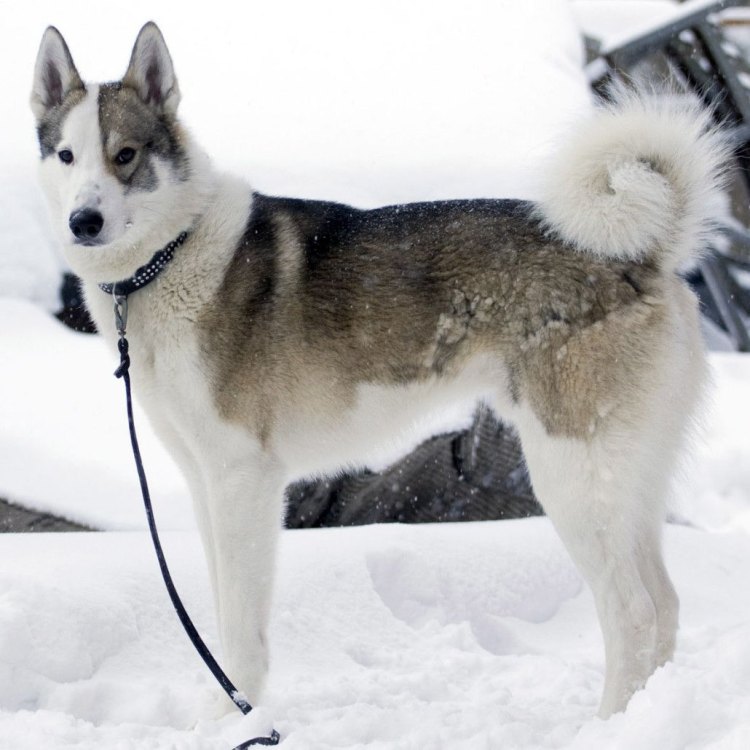
Canis lupus familiaris
The East Siberian Laika: A Hardy and Versatile Companion from the Wilds of Siberia
The East Siberian Laika, also known as the Vostotchno-Sibirsky Laika, is a fascinating and versatile canine breed native to the rugged and extreme landscape of Siberia. This medium-sized dog has been a trusted companion, fierce hunter, and valuable asset to the nomadic indigenous peoples of this vast region for centuries. Its unique features, behavior, and history make it a truly remarkable and intriguing breed.Origins and Physical Characteristics
The East Siberian Laika, or ESL, is one of several Laika breeds, which are primitive hunting dogs that originated in Russia PeaceOfAnimals.Com. This breed is believed to have evolved from the Spitz-type hunting dogs brought to Siberia by the nomadic tribes. Its name, "Laika", comes from the Russian word "layat", which means "to bark". This name is fitting, as the ESL is known for its strong and distinctive bark.The ESL is a medium-sized dog, standing at around 20 to 24 inches at the shoulder and weighing between 40 to 65 pounds. Its athletic and muscular build, coupled with its thick double coat, makes it well suited to withstand the harsh and cold climate of Siberia. The coat is made up of a soft and dense undercoat and a harsh and straight outer coat that can come in a variety of colors, including brown, black, and white.
One of the most distinct and recognizable features of the ESL is its erect ears, which are triangular in shape and set high on its head. These ears are essential for hunting, as they help the dog accurately locate and track prey through their highly sensitive hearing.
Behavior and Social Habits
As a hunting breed, the ESL is known for its intelligence, agility, and independent nature Elephant Fish. These traits have been honed and refined through years of working alongside their human handlers in the harsh and unforgiving Siberian wilderness. Their keen sense of smell and superior hunting skills make them ideal for tracking and taking down a variety of game, including large animals like bears and wolves.ESLs have a polygamous reproductive behavior, meaning that they do not mate for life and can have multiple partners. This behavior is common in wild animals such as wolves, and it allows for greater genetic diversity within the breed. They are also known to have a distinctive call, with a bark that is deep and forceful, and a howl that can reach long distances.
In the wild, the ESLs live in packs, led by an alpha male and female. Within the pack, there is a strict hierarchy, with each member playing a specific role in the group. The pack works together to hunt, protect their territory, and care for their young. This social structure, along with their intelligence and strong bond with their pack members, makes the ESL an incredibly loyal and devoted companion.
Human Use and Impact on the Ecosystem
The ESL has been an integral part of Siberian culture for centuries, and their remarkable abilities make them suitable for a range of tasks. Historically, they were used for hunting large game, such as bears and wolves, and for pulling sleighs in the winter months. They are still used for these purposes today.In more recent years, the ESL has also become popular as a companion and family pet due to their smart and affectionate nature. However, they do retain their natural hunting instincts, and therefore, require a firm and experienced owner who can provide them with adequate physical and mental stimulation.
Moreover, ESLs play an essential role in the ecosystem of Siberia. As skilled hunters, they help control the small mammal population, which can have a significant impact on the balance of the ecosystem. They also play a vital role in traditional hunting practices, which help to maintain and preserve the natural resources of the region.
Threats and Conservation Status
While the ESL has adapted and thrived in the harsh conditions of Siberia for centuries, it is not without its threats. One of the most significant dangers facing these dogs is hunting. While they are primarily used for hunting, they are also hunted themselves for their fur, meat, and even as competition for game animals.Additionally, the loss and destruction of their natural habitat also pose a threat to the long-term survival of the ESL. As human development and industrialization continue to encroach upon the remote areas where these dogs live, their ability to survive and thrive in the wild is severely diminished.
However, despite these threats, the East Siberian Laika is not currently listed as endangered or threatened. This is due in part to the fact that they are not widely recognized outside of their native region, and their population remains stable. Nevertheless, it is essential to continue to monitor their population and protect their natural habitat to ensure their long-term survival.
Conclusion
In conclusion, the East Siberian Laika is a remarkable and unique breed of dog that is highly adapted to the harsh and unforgiving landscape of Siberia. Their intelligence, independence, and strong bond with their pack make them an exceptional companion and hunting companion. However, they also play a vital role in the ecosystem and traditional practices of the region, making them a truly valuable asset.As with any indigenous species, it is vital to protect and preserve the East Siberian Laika and its natural habitat. By doing so, we can ensure that this fascinating and versatile canine breed continues to thrive for future generations. Whether they are working alongside their human counterparts or providing loyal companionship, the ESL is a truly extraordinary and treasured part of Siberia's rich cultural heritage.
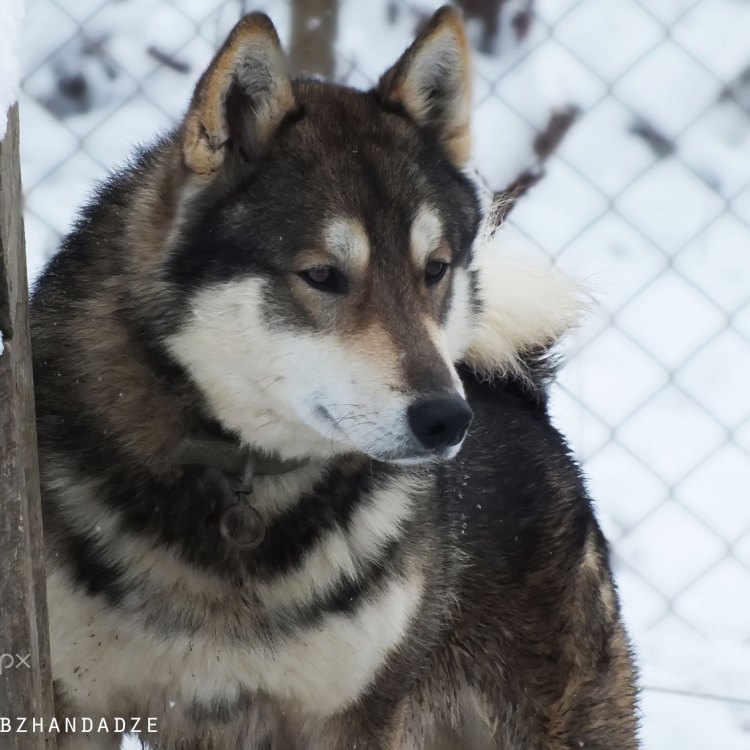
The Magnificent and Mighty East Siberian Laika: A Canine of the Wild Tundra
Disclaimer: The content provided is for informational purposes only. We cannot guarantee the accuracy of the information on this page 100%. All information provided here may change without prior notice.


